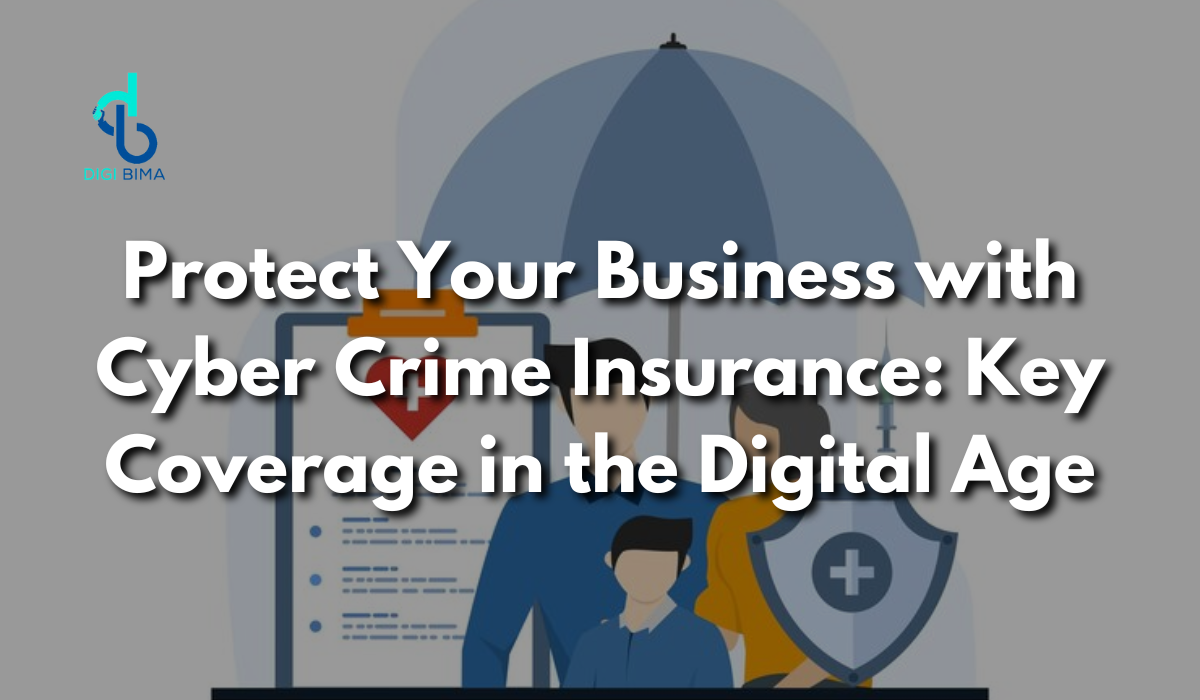In today’s digital landscape, where business operations are increasingly governed by internet connectivity, the threat of cyber attacks looms larger than ever. As technology evolves, so does the sophistication of cyber threats, from data breaches and ransomware to identity theft and financial fraud.
This relentless progression makes Cyber Crime Insurance not just a precaution, but a vital asset for any modern business. This article explores the key coverage areas of Cyber Crime Insurance, illustrating its importance with real-world examples and providing guidance on navigating these waters with an ally like Digibima.
Understanding Cyber Crime Insurance
Cyber Crime Insurance is designed to mitigate the risks associated with online activities and digital operations. It provides coverage for a variety of incidents, including but not limited to data breaches, network damage, and business interruption caused by cyber-attacks.
As businesses digitize their assets and processes, the potential for significant financial loss due to cyber incidents increases dramatically. Thus, Cyber Crime Insurance becomes essential in providing a safety net that helps businesses recover from digital assaults.
Key Coverage Areas
- Data Breach Coverage: This covers the costs associated with the loss or theft of customer data or confidential information. This can include legal fees, notification costs to inform affected parties, and costs related to credit monitoring services for those impacted by the breach.
- Business Interruption: After a cyber attack, a business might experience downtime, which can lead to loss of income. Cyber Crime Insurance helps cover this loss of revenue and helps businesses recover from interruptions smoothly.
- Cyber Extortion Defense: Ransomware attacks, where hackers demand payment to unlock infected systems, are increasingly common. This coverage includes consultation fees and payments to hackers, if necessary, to regain access to the files.
- Forensic Support: Post-attack, a business will need to investigate how the breach happened and how to prevent future incidents. This coverage pays for the expenses of hiring technology specialists to assess the breach’s impact and origin.
- Legal Fees and Regulatory Fines: If a breach leads to legal actions, or if regulatory fines are imposed, Cyber Crime Insurance covers these costs, which can be substantial depending on the nature of the data involved.
Some Examples in Action
- The Case of a Retail Giant: A well-known retail company faced a massive data breach resulting in the theft of millions of customers’ credit card information. Their Cyber Crime Insurance covered the legal costs, fines imposed by credit card companies, and the expenses for notifying affected customers, saving the company from potential bankruptcy.
- Small Business Email Scam: A small, family-owned business was tricked by a phishing scam that resulted in the unauthorized transfer of funds. Their Cyber Crime Insurance covered the financial losses and provided resources to enhance their cybersecurity measures, preventing future incidents.
Choosing the Right Insurance Policy
Selecting the right Cyber Crime Insurance policy involves several considerations:
- Risk Assessment: Understand the specific cyber risks your business faces based on its size, industry, and digital presence.
- Coverage Limits: Ensure the policy covers the potential maximum loss your business could face in a cyber incident.
- Exclusions and Deductibles: Be aware of what is not covered by your policy and the out-of-pocket costs before the insurance kicks in.
Conclusion
In today’s digital era, Cyber Crime Insurance is essential for safeguarding businesses against sophisticated cyber threats that can cause severe financial and reputational damage.
This type of insurance serves as a critical component of a company’s resilience strategy, providing financial support and stability in the aftermath of cyber incidents. By covering a range of potential losses, from legal fees to data recovery costs, Cyber Crime Insurance empowers businesses to respond confidently to cyber attacks.
Regularly updating cyber insurance coverage is crucial as technology and threats evolve. Platforms like Digibima are invaluable in this landscape, offering businesses the tools to compare and select tailored insurance solutions that meet their specific needs.
Ultimately, Cyber Crime Insurance isn’t just a protective measure—it’s an investment in the business’s future, reinforcing its stability and building trust among stakeholders in a world where digital threats are an ever-present risk.
Finding the Best Health Insurance Plans Online
FAQs About Cyber Crime Insurance
Q1. What does Cyber Crime Insurance not cover?
Cyber Crime Insurance typically does not cover potential future lost profits or intellectual property theft losses.
Q2. Is Cyber Crime Insurance necessary for all businesses?
While all businesses benefit from this coverage, those relying heavily on digital tools and storing customer data online should particularly consider it essential.
Q3. How does Cyber Crime Insurance complement existing IT security measures?
Insurance is part of a comprehensive risk management strategy that includes but is not limited to advanced IT security. It ensures financial recovery, allowing businesses to invest in recovery and prevention after an incident.
Q4. How often should I review my Cyber Crime Insurance policy?
It’s advisable to review your policy annually or whenever significant changes to your business operations occur.
Q5. Where can I find a suitable Cyber Crime Insurance policy?
Insurance aggregators like Digibima provide a platform to compare different policies and choose one that best fits your business’s needs.
